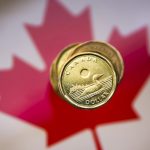 The Aussie advanced to the strongest level in more than four months against its US counterpart on Wednesday, after Reserve Bank of Australia Governor Glenn Stevens said there were early signs of a transition from a mining-driven demand to domestic consumption and that the economy may strengthen later this year.
The Aussie advanced to the strongest level in more than four months against its US counterpart on Wednesday, after Reserve Bank of Australia Governor Glenn Stevens said there were early signs of a transition from a mining-driven demand to domestic consumption and that the economy may strengthen later this year.
AUD/USD hit a session high at 0.9216 at 08:20 GMT, after which consolidation followed at 0.9211, adding 0.51% for the day. Support was likely to be received at March 25th low, 0.9120, while resistance was to be encountered at November 22nd high, 0.9250.
Stevens did not comment on the exchange rate, but said that the Australian dollar direction depends on market players view of the nations fundamentals, and that the economy already showed signs of re-balancing from mining-led demand to broader domestic demand, at a speech in Hong Kong today. He also added that borrowing costs, currently at a record-low 2.5% are likely to remain steady for a period, helping the economy to re-balance.
In his previous comments, Stevens was referring to Aussies as too strong given economic fundamentals, trying to talk down the exchange rate.
“He did mention that the exchange rate is a source of significant uncertainty, but he certainly didn’t give it the same level of emphasis” as in recent commentary, Robert Rennie, the Sydney-based head of currency and commodity strategy at Westpac Banking Corp., said of Stevens’s remarks, cited by Bloomberg. “The foreign-exchange market took that as a green light to move the currency higher.”
The MSCI Asia Pacific Index of stocks added 1% today.
Meanwhile, consumer confidence in the US rose more than expected, reaching a 6-year high in March.
US consumer confidence increased to 82.3 this month, the strongest since January 2008, from 78.3 in February and exceeding analysts’ forecasts for a gain to 78.6, data by the Conference Board showed today.
However, a separate report revealed that sales of new homes declined to a five-month low last month, raising concern the industry may need more time to recover after the frigid weather curbed demand earlier this year.
Purchases of new homes slid by 3.3% in February to an annualized 440 000 pace, the weakest level since September, data by the US Commerce Department showed today. January’s purchases were revised to 455 000 units from 468 000 units previously reported. Analysts’ expectations pointed to a 4.9% decline in February.
Elsewhere, AUD/NZD was gaining 0.12% to trade at 1.0703 at 08:33 GMT. The pair earlier touched a daily high at 1.0709. Support was likely to be received at March 21st low, 1.0594, while resistance was to be met at March 25th high, 1.0717, also the pairs highest since March 7.





